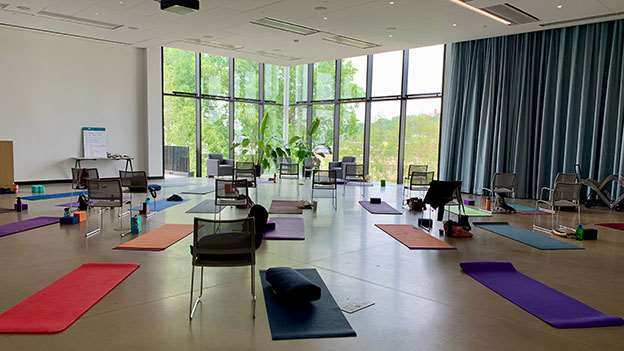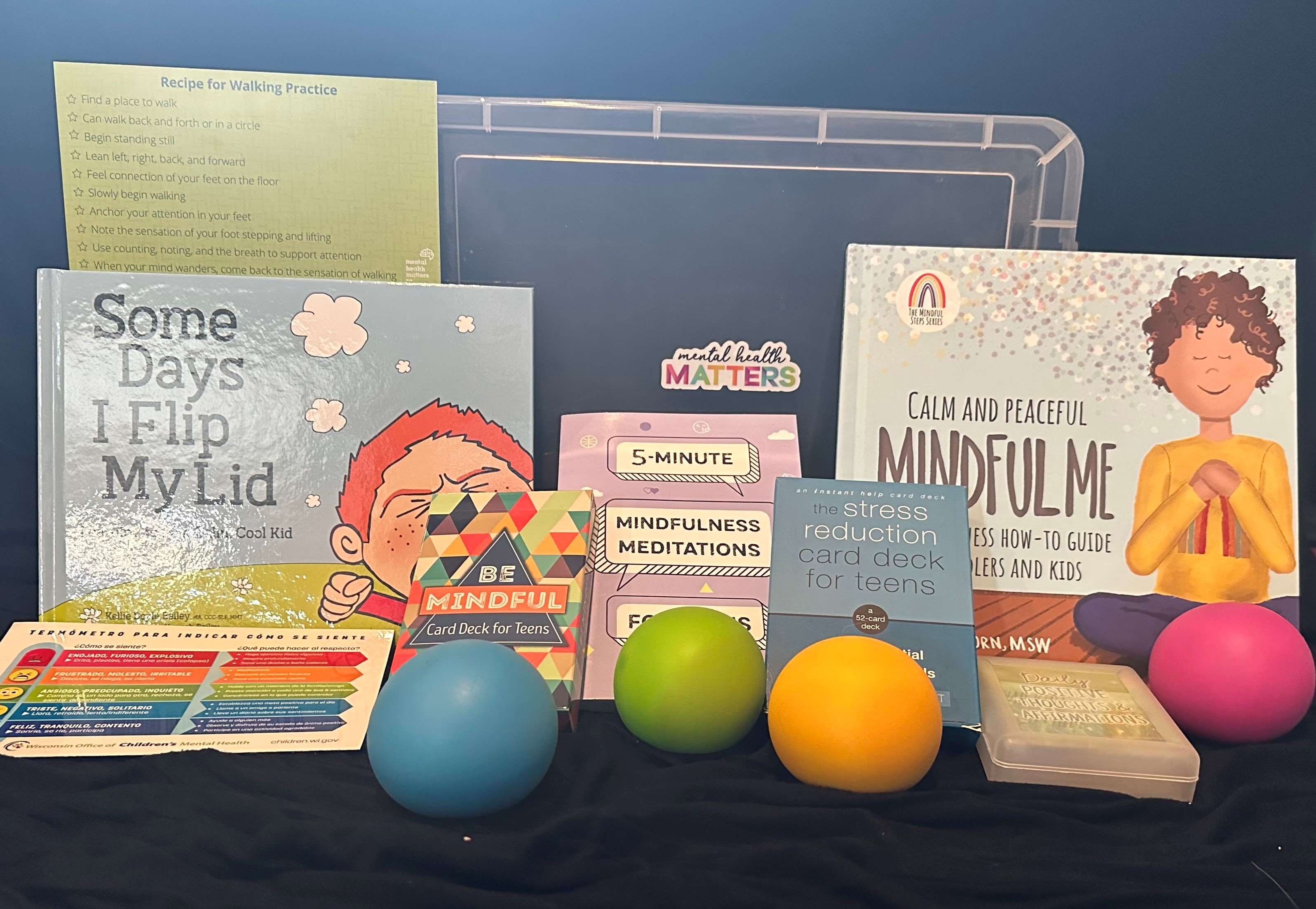Mindfulness Training
Coalitions that Adopted
Strategy Type
School-basedCommunity-based
Strategy Goal
Build knowledge and practice around mindfulness for school staff to use strategies with youth and increase youth coping skills.Intended Population
Middle and high school staff in Eau Claire & Chippewa Counties.Strategy Background
In the Chippewa Valley, the 2015 Youth Risk Behavior Survey (YRBS) revealed that nearly 30% of students were at risk for depression based on the question: “During the past 12 months, did you ever feel so sad or hopeless almost every day for two weeks or more in a row that you stopped doing some usual activities?” In addition, suicide numbers were increasing and rates of hospitalizations due to self-injury were higher than the state average. These statistics prompted action by community health organizations to unite and maximize both resources and connections throughout the region for a broad approach to solving the mental health issues facing their communities.
One strategy enacted by the Chippewa Valley coalition, Mental Health Matters (MHM), was the creation and implementation of a six-session mindfulness fundamentals training course developed by the Mindfulness Training Institute and subsequent workshops and consultations for school staff. The full program generally ran the course of a single school semester, from the Fall to Winter or Winter to Spring.
Mindfulness in the classroom can be an important tactic to improve student mental health. Research shows that mindfulness skills can increase a teacher’s sense of well-being and self-efficacy, as well as their ability to manage classroom behavior and develop supportive relationships with students. It also improves students’ ability to focus in class, recognize and regulate their thoughts and emotions. By modeling and guiding mindfulness exercises on a regular basis, staff can help students develop their own mindfulness skills, increasing the likelihood of them continuing the practices outside the classroom and at home (Meiklejohn, 2012).
The training implemented by MHM was conducted by a “Mindfulness Trainer” and aimed to bring awareness, clarity, and calmness to the daily lives of school staff. It also introduced staff with practices and meditation techniques that cultivate mindfulness in their daily lives and educate on its benefits for interpersonal relationships, emotional, mental and physical well-being. Following the six-session course were a series of discussions with an “Implementation Coach,” who provided consultations for participants to develop their own schoolwide and classroom-specific mindfulness strategies that aimed to grow self-care, increase the use of mindfulness practices with students, and ultimately improve youth coping skills. Each participating school also embedded a “School Mindfulness Champion” – a staff member who worked internally with other participants, promoting the learned practices and determining the best strategies for the school and staff to use with students.
Through the facilitation of discussions with teachers and other school staff to develop in-class strategies to improve mindfulness, MHM helped schools better understand the challenges faced by their students and increase staff ability to manage stress in the classroom. The coalition’s training led to the implementation of unique mindfulness strategies for schools and individual staff across five districts in the Chippewa Valley.
Meiklejohn, J., Phillips, C., Freedman, M. L., Griffin, M. L., Biegel, G., Roach, A., Frank, J., Burke, C., Pinger, L., Soloway, G., Isberg, R., Sibinga, E., Grossman, L., & Saltzman, A. (2012). Integrating mindfulness training into K-12 education: Fostering the resilience of teachers and students. Mindfulness, 3(4), 291–307.“They are much more calm even though some of my students still have many ACEs and are still working on calming their bodies. It has really helped with students who have anxiety or panic attacks.”
Strategy

Challenges & Tactics to Address Them
List of Challenges & Tactics

“This is a life changing course. I feel empowered to deal with my stress and help students with anxiety. This has real power and I think all of our teachers and students in our district would benefit from mindfulness training. I think it is a no brainer that it should be incorporated into our Professional Development, wellness and teacher training. I am very appreciative to have participated.”
Best Practices




